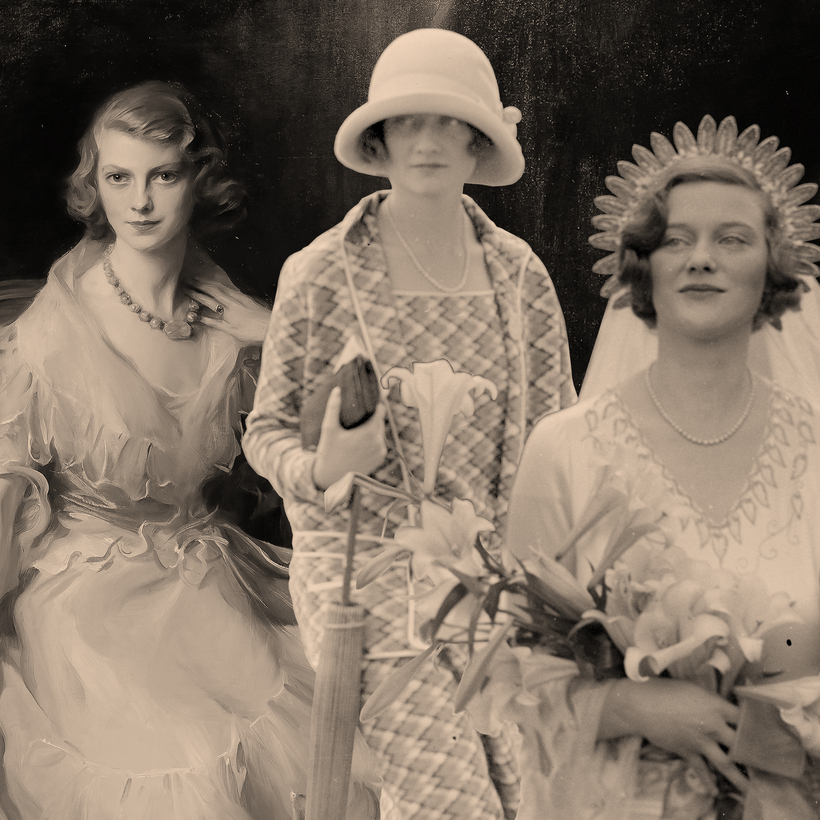Close up, everything looks flawed. Certainly, the deeper I dug into the lives of the three Guinness girls—Aileen, Maureen, and Oonagh—for my novel The Glorious Guinness Girls, and the harder I looked at the Roaring Twenties, the Guinness decade, the more pitted it all appeared.
From a distance, all I saw was the glamour. The Guinness girls were born at the beginning of the 20th century and died at the end of it. They appeared to live through history as though history were no more than a series of minor moments in the greater arc of their own lives. They were rich (Guinness money was as solid and visible as the iconic golden harp embossed on the St. James’s Gate beer factory), beautiful, giddy, and seemingly insulated from the world around them.
As girls, brought up on the outskirts of Dublin, Aileen, Maureen, and Oonagh were spectators to the Irish War of Independence (1919–21), and then the Irish Civil War (1922–23). From Glenmaroon, their sprawling estate, the Guinness girls watched the burning of the Four Courts, in June 1922, smoke rising into the sky over the city as the forces of the new Irish Free State tackled those who opposed the treaty granting independence from Britain.
At first, the girls were too young—barely in their teens at the time the Four Courts burned—and too rich to be involved. Their “job,” back then, was to get ready for the London Season, which would launch them into society and introduce them to suitable husbands.
By the time they moved to London, in the early 1920s, the Guinnesses were older and society was changing rapidly. This was the era of excess: the Jazz Age, a decade of parties, cocktails, fancy dress, and extravagance that ended with the great financial crash of 1929. It was daring and dazzling. At least from a distance. The closer I looked, the more I saw the tragedy that underpinned it all.
Their “job,” back then, was to get ready for the London Season, which would launch them into society and introduce them to suitable husbands.
This decade of decadence was inspired by the appalling losses of the First World War. The young people who danced and drank their way through it were oftentimes driven by grief—they had lost fathers, brothers, cousins—and guilt. Most of the Bright Young Things were too young to have joined up and fought. They came of age in the few years after the war ended, and were both sick of hearing about it and haunted by the fact that they hadn’t played a part in it.
Into this scene, the Guinness girls exploded merrily. They danced and drank with the best of them—Nancy Mitford, Evelyn Waugh, and Brian Howard, who all wrote and published impressively; Elizabeth Ponsonby, Stephen Tennant, and “Baby” and Zita Jungman, who squandered their youth and talent unproductively. If the gossip columns of the 1920s are any indication, Aileen, Maureen, and Oonagh were at the center of everything.
Everything social, that is. In an age where the rights of women were moving briskly forward—where women were getting jobs, launching careers, securing the right to vote—the Guinness girls were content to party and get married. They didn’t use their huge wealth to forge careers or philanthropic endeavors. They chose to marry, have children, and become hostesses of grand and lavish houses.
They were charming, glamorous, and beguiling, and then, later on, unfulfilled, sad, anachronistic. They were young at a time of energy and societal change, and they chose a way that was old and safe and small. What I found was that, under the microscope, glamour gives way easily to something much less shiny and arguably more flawed.
Emily Hourican’s The Glorious Guinness Girls is out now from Grand Central

